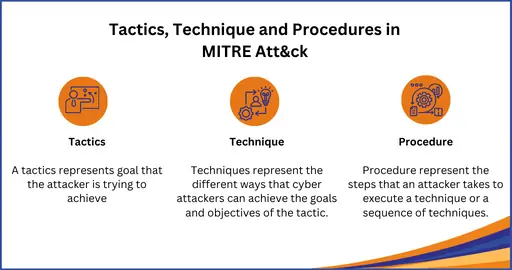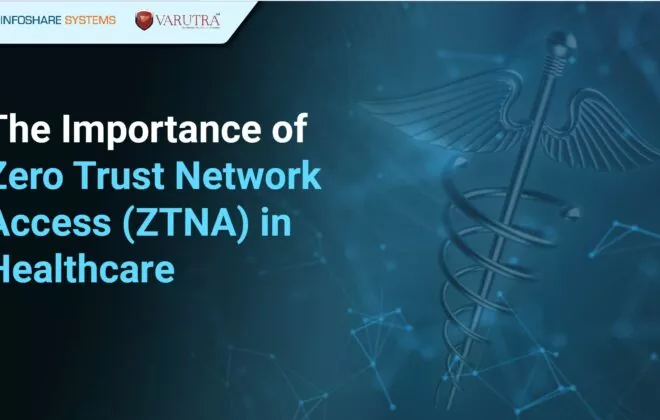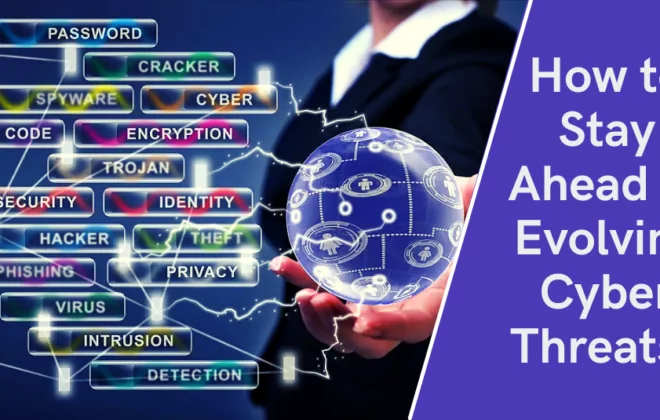The MITRE ATT&CK Framework and SOAR: A Dynamic Duo in Cybersecurity
I. Introduction
In today’s ever-evolving cybersecurity landscape, staying ahead of adversaries has become a challenge. Cyber threats have evolved to a point where they no longer follow easily recognizable patterns, rendering traditional threat anticipation methods obsolete. Security analysts must continually adjust, employing advanced techniques and state-of-the-art technology to identify, analyse, and address emerging threats. This adaptive approach is essential for safeguarding digital assets and fortifying organizational defences
The MITRE ATT&CK framework has proven to be a great source of knowledge for understanding adversary attack tactics and techniques based on real-world observations of cybersecurity threats. Security Orchestration, Automation, and Response (SOAR) technology reduces incident response time for known attacks by coordinating, executing, and automating tasks among different individuals and security tools, all within a single platform. The combination of both can assist an organization in achieve higher information security goals, maintain best CIA triad posture, and increase business opportunities.
II What is MITRE ATT&CK Framework?
The MITRE ATT&CK framework meticulously outlines the intricate stages an adversary might navigate while orchestrating a cyberattack. MITRE has converted the conventional cyber kill chain into the ATT&CK (Adversarial Tactics, Techniques, and Common Knowledge) matrix. This matrix consists of 12 distinct ‘tactics,’ encapsulating the pivotal phases of an attack, and each tactic is intricately subdivided into a plethora of associated ‘techniques.’ These techniques encompass the procedures an attacker could utilize to execute the respective tactic.
Source: https://blogs.infoblox.com/security/mitre-attck-and-dns/
III. Tactics & Techniques: The Nuts and Bolts of MITRE ATT&CK
Within the MITRE ATT&CK Framework, tactics are further broken down into techniques. Techniques provide specific details about how adversaries execute their strategies. They serve as playbooks for defenders, guiding them in understanding an attacker’s modus operandi.
The extensive library of techniques within the MITRE ATT&CK Framework includes over 150 techniques and 270 sub-techniques. Each technique sheds light on a different facet of an attacker’s approach, helping security teams prepare for potential threats.
Kindly refer to below official link for detailed information on defined Enterprise level TTPs (Tactics, Techniques, Procedures).

IV. The Benefits of MITRE ATT&CK in SIEM
Integrating the MITRE ATT&CK Framework into your Security Information and Event Management (SIEM) system can yield substantial benefits. Here’s how it enhances your cybersecurity posture:
1. Faster Threat Detection and Response
SIEM vendors are continually seeking ways to improve threat detection and response. The ATT&CK Framework enables clearer communication within security teams, facilitating faster threat detection and response. This bridges the gap between alerts and actionable insights.
2. Streamlined Compliance and Reporting
The Framework streamlines the process of producing accurate reports for senior leadership, auditors, and Chief Information Security Officers (CISOs). Automated dashboards and reports provide valuable insights, ensuring compliance objectives are met.
This provides management visibility on tactics where most attacks have occurred and focus only on those areas as a part of threat elimination and defence hardening process.
3. Improved Incident Overview
By mapping security alerts to ATT&CK IDs, SIEM solutions offer a clearer overview of incidents. This unified approach allows security teams to assess security coverage and risks more efficiently.
V. What is SOAR (Security Orchestration, Automation, and Response)?
SOAR (Security Orchestration, Automation, and Response) is a comprehensive suite of capabilities designed to empower security analysts through the use of machine learning and automation, ultimately enhancing their security processes. The primary goal of SOAR is to significantly improve efficiency, accuracy, and agility in responding to cyber threats by streamlining security operations. These platforms integrate various security tools, orchestrate workflows, and automate repetitive tasks, enabling security teams to focus on the more complex and strategic aspects of threat detection and response.
Below are examples of some well-known SOAR technologies currently available in the market.
• Chronicle SOAR
• Cyware SOAR
• Fortinet FortiSOAR
• IBM QRadar SOAR
• Palo Alto Networks Cortex XSOAR
• Rapid7 InsightConnect
• Splunk SOAR
• Swimlane SOAR
SOAR simplifies the threat detection process by automating the initial alert triage. The alert triage processes include key components as mentioned below :
• Planning response approach in advance
• Prioritizing incoming alerts based on their potential impacts
• Gathering detailed information to include in analysis
• Escalating alerts and / or taking immediate required action
• Reporting and reviewing results
The level of automation can be totally customized to be either fully manual, fully automated, or a combination of the two.
VI. Use Cases: Unleashing SOAR’s Potential
Let’s explore three compelling use cases that demonstrate the incredible potential of SOAR platforms:
1. Handling Security Alerts
SOAR tools excel in identifying and responding to various security alerts commonly encountered by organizations. Whether it’s phishing emails, user login failures, unusual logins, or endpoint malware infections, SOAR systems can automate investigation, response, and mitigation tasks with remarkable efficiency.
2. Managing Security Operations
SOAR tools shine in automating routine security operations tasks. They can handle tasks such as SSL certificate management, diagnosing endpoint agent issues, and managing vulnerabilities. This automation reduces manual efforts, increases efficiency, and minimizes damage from potential attacks.
3. Orchestrating Multi-Tool Integration
Many organizations rely on a diverse array of security tools from different vendors, which may not always work seamlessly together. SOAR solutions bridge this gap by providing multi-tool integration. They enable security analysts to access and orchestrate a wide range of IT tools, enhancing visibility and coordination within the security framework.
VII. The Power of MITRE ATT&CK and SOAR Integration
1. Enhanced Threat Investigation
Integrating MITRE ATT&CK with SOAR empowers security analysts to tap into the wealth of techniques provided by MITRE. By leveraging SOAR’s advanced capabilities, they can scour endpoints (Scouring endpoints refers to the thorough and comprehensive examination of various devices or endpoints within a network), SIEM logs, and other entry points for relevant indicators of compromise (IOCs). This integration turbocharges threat hunting, resulting in more effective processes.
2. Rapid Incident Response
When it comes to responding to threats, time is of the essence. MITRE ATT&CK, with its insights into adversary behavior, guides analysts in understanding an ongoing attack. It provides recommendations for the most appropriate mitigation strategies, drastically reducing response times. Upon detection of attack pattern and stage, incident responders can quickly take required steps as per defined playbook to contain and remediate threat. For known pattern of attacks, playbook can be created with automated response steps in SOAR.
Example 1:
To stop more fraudulent emails from getting to an employee’s inbox, it may, for instance, detect suspicious emails ( Tactic: Initial Access, Technique: Phishing , Sub-Technique: Spearphishing Attachment) and flag them as possible phishing attempts, look for copies of these emails across the network and quarantine or destroy them, and block the original IP address or phishing URL.
Example 2: From basic pings (ICMP queries and answers) to more sophisticated scans that could disclose host software or versions through server banners or other network artifacts, an attacker examines a variety of IPs within an organization (Tactic: Reconnaissance, Technique: Active Scanning, Sub-Technique: Scanning IP Blocks). Based on the poor reputation of the origin IP (SOAR threat intelligence), the same is identified and marked as malicious, and the originating IP address is blocked.
3. Data-Driven Decision-Making
Integrating MITRE and SOAR means that MITRE’s valuable insights are readily available within the incident case. Analysts no longer need to switch between systems to gather intelligence. By monitoring MITRE ATT&CK trends and strategies, analysts can make informed, data-driven decisions, bolstering their organization’s defences.
4. Proactive Threat Anticipation
With SOAR’s advanced playbooks and MITRE’s wealth of knowledge, analysts can stay one step ahead of cyber attackers. They can quickly validate potential threats, trigger automated playbooks, and swiftly uncover any IOCs that may neutralize an attack before it unfolds.
VIII. Harnessing MITRE ATT&CK with SOAR
The integration process is straightforward:
• Create a MITRE ATT&CK playbook within SOAR.
• Automatically attach MITRE threat information to cases triggered by relevant alerts.
• Access MITRE threat information instantly, eliminating the need for manual information retrieval.
• Speed up incident response, making your cybersecurity team more agile.
Below playbook examples represents ameliorate use of MITRE ATT&CK and SOAR –
SOAR Playbook Example 1:
Incident:
Anomalous activity on premise network
MITRE Tactic and Technique:
Tactic: Discovery
Techniques: “Network Service Scanning” (T1046) or “System Network Configuration Discovery” (T1016) might be used to identify potential targets or vulnerabilities within the on-premises network.
Alert Trigger:
•Detection of unusual network traffic patterns on an on premise network.
IT Steps:
a. Initial Triage:
• Collect and analyze logs from network devices.
• MITRE Tactic and Technique categorization
• Determine the scope and severity of the anomalous activity.
b. Isolation and Containment:
• Isolate affected segments of the network to prevent lateral movement.
• Block suspicious IP addresses or devices associated with the activity.
c. Forensic Investigation:
• Conduct a detailed forensic analysis to identify the root cause.
• Gather evidence for potential legal or compliance requirements.
d. Communication:
• Notify relevant internal teams, including IT and security personnel.
• Communicate with external entities if the incident involves a third party.
e. Remediation:
• Apply security patches or updates to address vulnerabilities.
• Implement changes in network configurations to enhance security
f. Post-Incident Review:
• Evaluate the effectiveness of the response.
• Document lessons learned and update incident response procedures accordingly.
2. SOAR Playbook Example 2:
Incident: Unusual Resource Access in Cloud Environment
MITRE Tactic and Technique:
Tactic: Evasion
Techniques: “Hidden Files and Directories” (T1564) or “Indirect Command Execution” (T1202) might be used to evade detection while accessing resources within the cloud environment.
Alert Trigger:
• Detection of unauthorized access or activity in a cloud infrastructure.
IT Steps:
a. Automated Triage:
• Query cloud logs for details on the unauthorized access.
• MITRE Tactic and Technique categorization
• Identify the affected resources and user accounts.
b. User Verification:
• Verify the legitimacy of the user accounts involved in the incident.
• Confirm the authorization level and permissions for those accounts.
c. Isolation and Containment:
• Restrict access to compromised resources.
• Rotate access keys or credentials associated with compromised accounts
d. Incident Notification:
• Notify cloud service provider support or security teams.
• Inform internal stakeholders about the incident and actions taken.
e. Remediation and Compliance:
• Implement additional security measures, such as multi-factor authentication.
• Ensure compliance with data protection regulations and policies.
f. Post-Incident Review:
• Assess the response time and effectiveness of automated actions.
• Update cloud security configurations and access controls based on lessons learned.
These playbooks provide structured responses to security incidents in on premise and cloud environments, using the capabilities of a Security Orchestration, Automation, and Response (SOAR) platform. Adjustments should be made based on the specific tools, technologies, and processes used within your organization.
IX. Conclusion
In conclusion, the integration of the MITRE ATT&CK Framework and SOAR is a game-changer in cybersecurity. This dynamic duo equips organizations with the knowledge, automation, and orchestration capabilities needed to combat modern cyber threats effectively. As the cybersecurity landscape continues to evolve, embracing this powerful synergy is essential for staying one step ahead of adversaries.
Research, references & resources:
https://www.f5.com/labs/learning-center/mitre-attack-what-it-is-how-it-works-who-uses-it-and-why
https://www.securityweek.com/
https://www.mitre.org/
https://www.securitymagazine.com/articles/94475-best-practices-in-applying-mitre-attck-to-your-organizational-security




